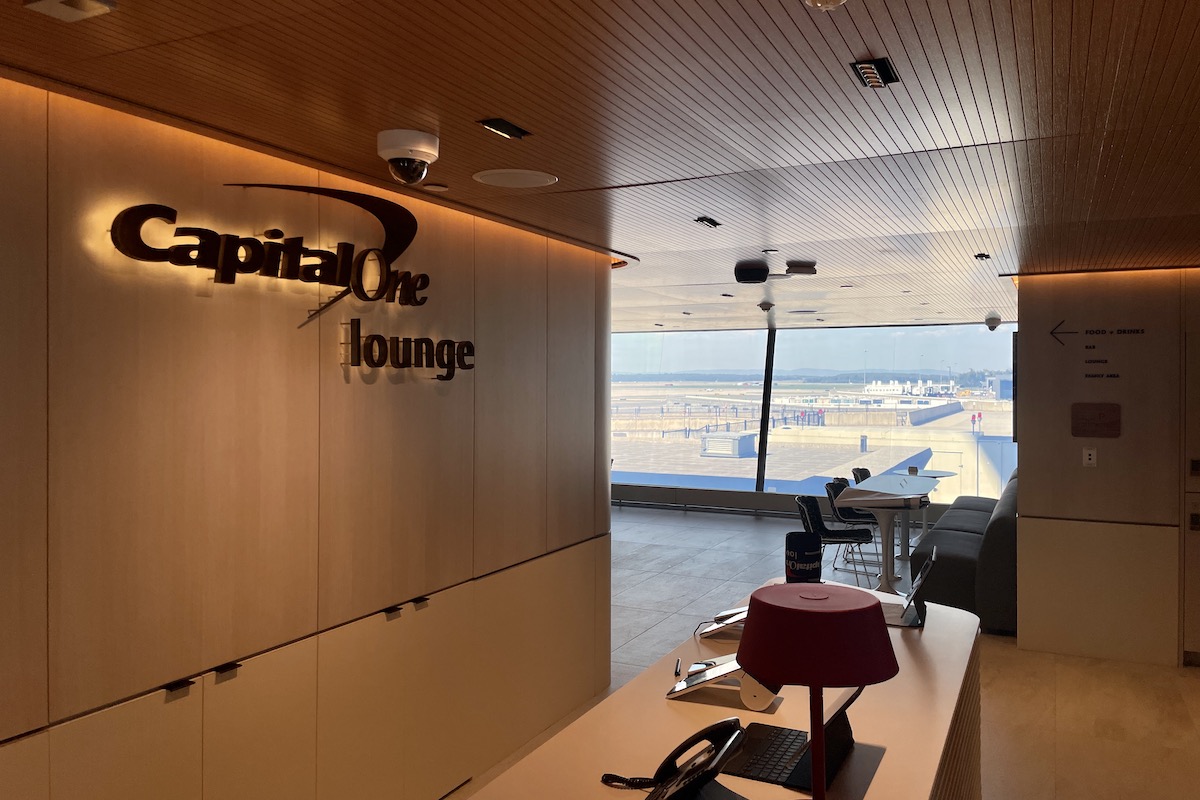Skift Take
Airport lounge access is increasingly a standard in the lucrative credit card travel world. And while they may not be as posh as their image elicits, travelers can't get enough.
The idea of an airport lounge elicits glamorous images of jet setting and flying first class. The reality is far more mundane: Airport lounges are increasingly common for anyone flying with a credit card, and increasingly crowded, rundown, and, well, not that exclusive.
Still, lounges continue to appeal to travelers, and that is driving ever increasing investment.
Credit card companies, in addition to partnering with airlines and lounge networks like Priority Pass, are some of the latest investors in the space. American Express was one of the first with its Centurion Lounge that opened a decade ago at the Las Vegas airport. More recently, Capital One and Chase have both entered with their own branded lounges.
Capital One opened its first branded lounge at the Dallas-Fort Worth airport in 2021, and on Thursday, opens its latest at Washington Dulles airport outside the nation’s capital.
“The cardholder demographic that we are really interested in serving cares a lot about travel,” Capital One Head of Travel Jenn Scheurich told Skift.
The new lounge is part of what Capital One CEO Richard Fairbank has previously described as a years-long strategy to “move upmarket to the very top of the heavy spender marketplace.” That included launching the Venture X card, required for access to the lounges, in late 2021.
The new lounge is part of a larger travel ecosystem at Capital One. The company also launched a new travel booking portal, known as Capital One Travel, powered by Hopper in 2021. (Capital One is also an investor in Hopper.)
Airlines Are Investing in Lounges Too
Airlines are also investing. American Airlines opened a new Admirals Club at its Washington Reagan National airport hub last year and is upgrading other lounges; Delta Air Lines opened a second Sky Club lounge at New York JFK in July and is set to open its first business class passengers-only lounge, the Delta One Lounge, at the airport next year; and United Airlines is testing new concepts at its Denver hub with the grab-and-go United Club Fly concept, as well as new traditional lounges.
Investment in lounges isn’t easy to quantify. But a quick review of U.S. airports shows that even non-hub airports like Pittsburgh have gained new lounges in the past decade.
The challenge for credit card-owned lounges, at least for now, are their limited numbers. Major carriers already have spaces in all their main hubs and bases, plus many secondary cities. If they are a member of a global alliance — Oneworld, SkyTeam, and Star — their customers have access to those partners’ lounges as well.
That creates a pretty unbeatable lounge network around the world — at least for loyal, card-holding, frequent fliers.
By comparison, American Express has only 13 U.S. lounges and 11 international spaces after 10 years in the business. Capital One and Chase both have just two spaces.
Lack of global lounge networks likely makes access to these spaces a nice benefit, but not a real dealmaker, for most travelers.
A Launching Point at Dulles
Capital One’s new Dulles lounge is located just past the security checkpoint in the main terminal at the base of the iconic, Eero Saarinen-designed control tower. That location makes it, as the company’s Director of Airport Experiences David Borowik put it, ideal as a “jumping off point” for travelers leaving on a trip.
The jumping off point idea is key. Unique to the Capital One Lounge at Dulles is, by virtue of its location in the terminal, that almost all travelers need to take either a train or people mover on to their gate after stopping in the lounge.
That transitory clientele caters to Capital One’s emphasis on grab-and-go food and beverage options. Just past the entryway to the lounge is a coffee bar where travelers can pick up a quick flat white or cold brew for their flights. Next to that is a cooler of ready-to-go food options they can easily stuff in their carry-on bags with.
It’s only when travelers make their way around the the far side of the circular-shaped lounge do they find seating areas, small plates, and the obligatory bar. The space itself, while bright and airy, feels a tad sterile as is common in so many airport environments.
The aim for Capital One was to make the lounge a “great hospitality experience” that is also a “platform for storytelling” about the local area, Scheurich said. The Dulles location features an exclusive beer from nearby Lost Rhino Brewing — a malty, German-style lager — and coffee from both Richmond, Va.-based Blanchard’s Coffee Roasting Company and La Colombe.
“We’re really designing for the Venture X customer,” Scheurich said on the company’s target demographic for its new lounges. Those customers, as she described them, are interested in experiences, travel, and curation — in other words, millennials and Generation Z travelers.
Capital One is already investing in a larger lounge network. Spaces are under construction at both the Denver and Las Vegas airports, and the company is constantly “scanning” for more opportunities, Scheurich said.
Story updated with additional details of the new lounge and its offerings.
The Daily Newsletter
Our daily coverage of the global travel industry. Written by editors and analysts from across Skift’s brands.
Have a confidential tip for Skift? Get in touch
Tags: airlines, airport lounges, business travel, capital one travel, hopper, Washington Dulles
Photo credit: The entrance to the new Capital One Lounge at Washington Dulles airport. (Capital One) Edward Russell / Skift
